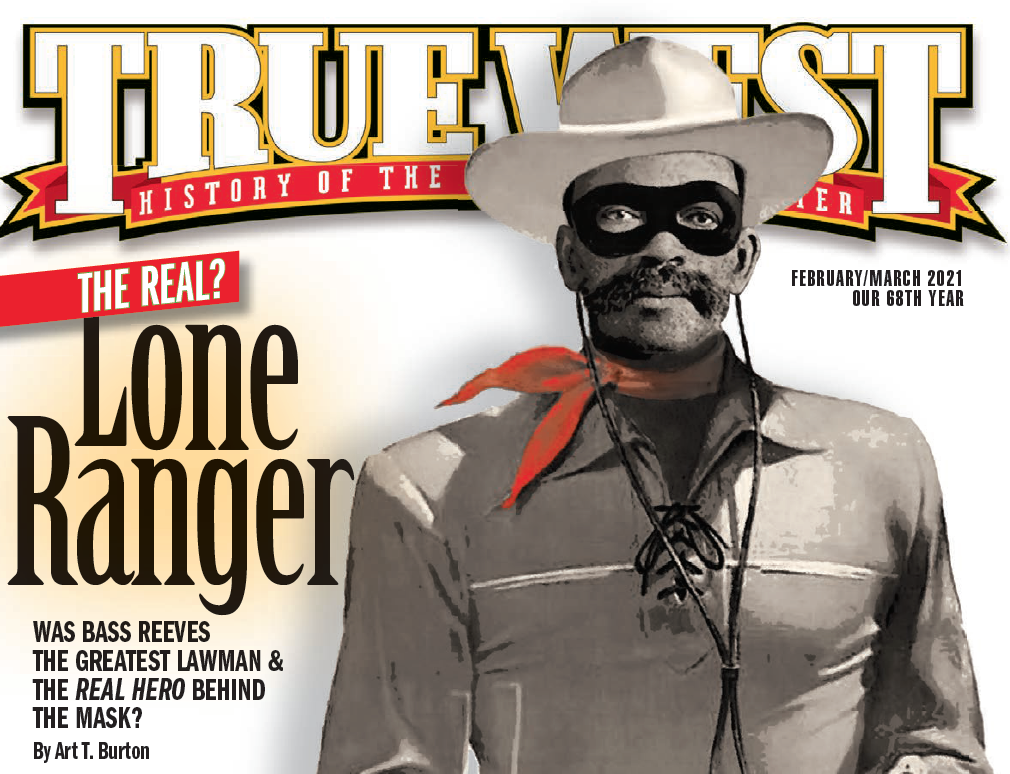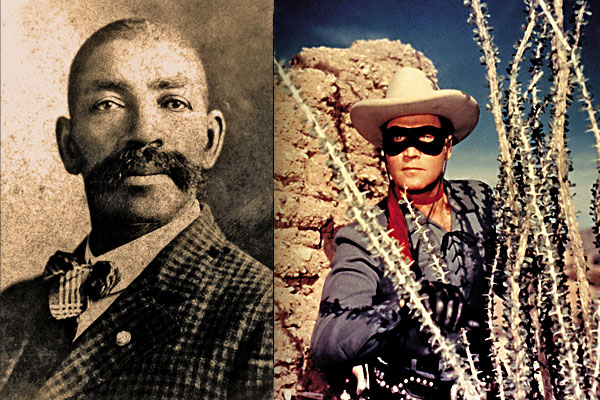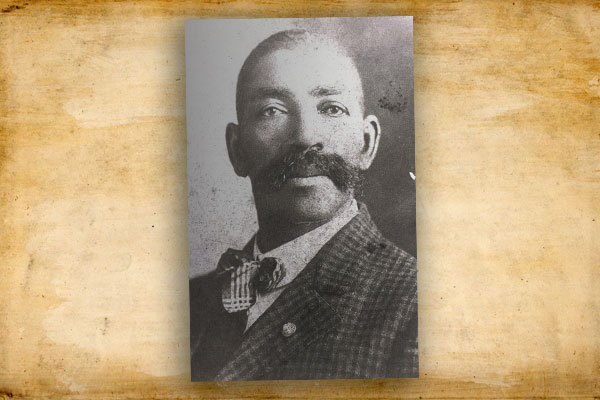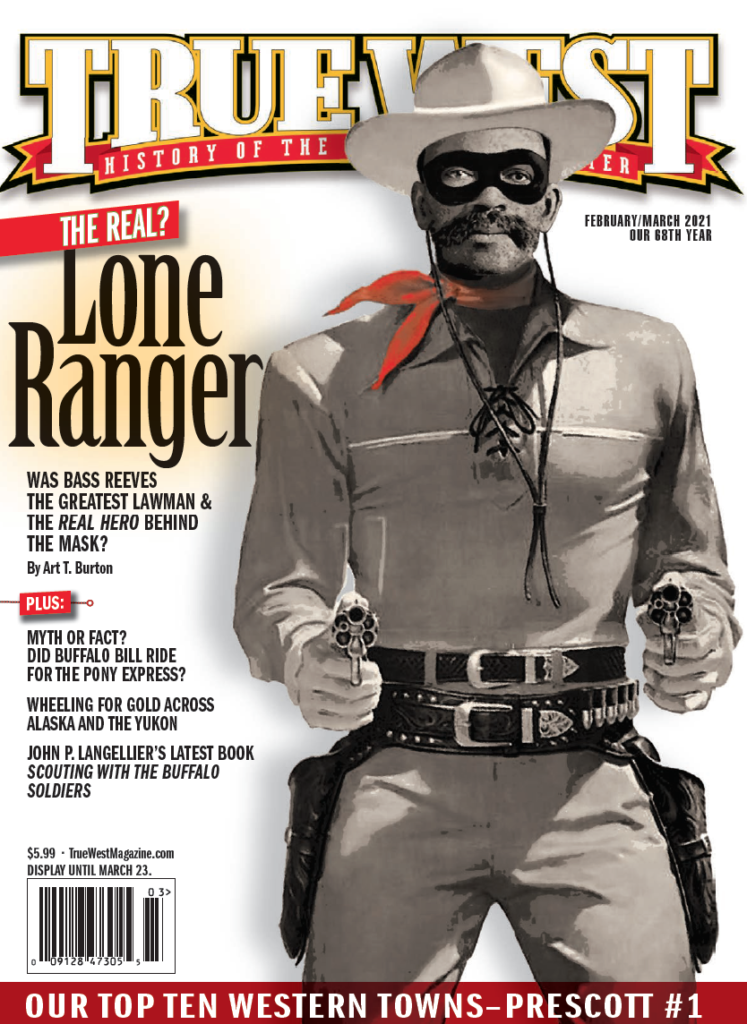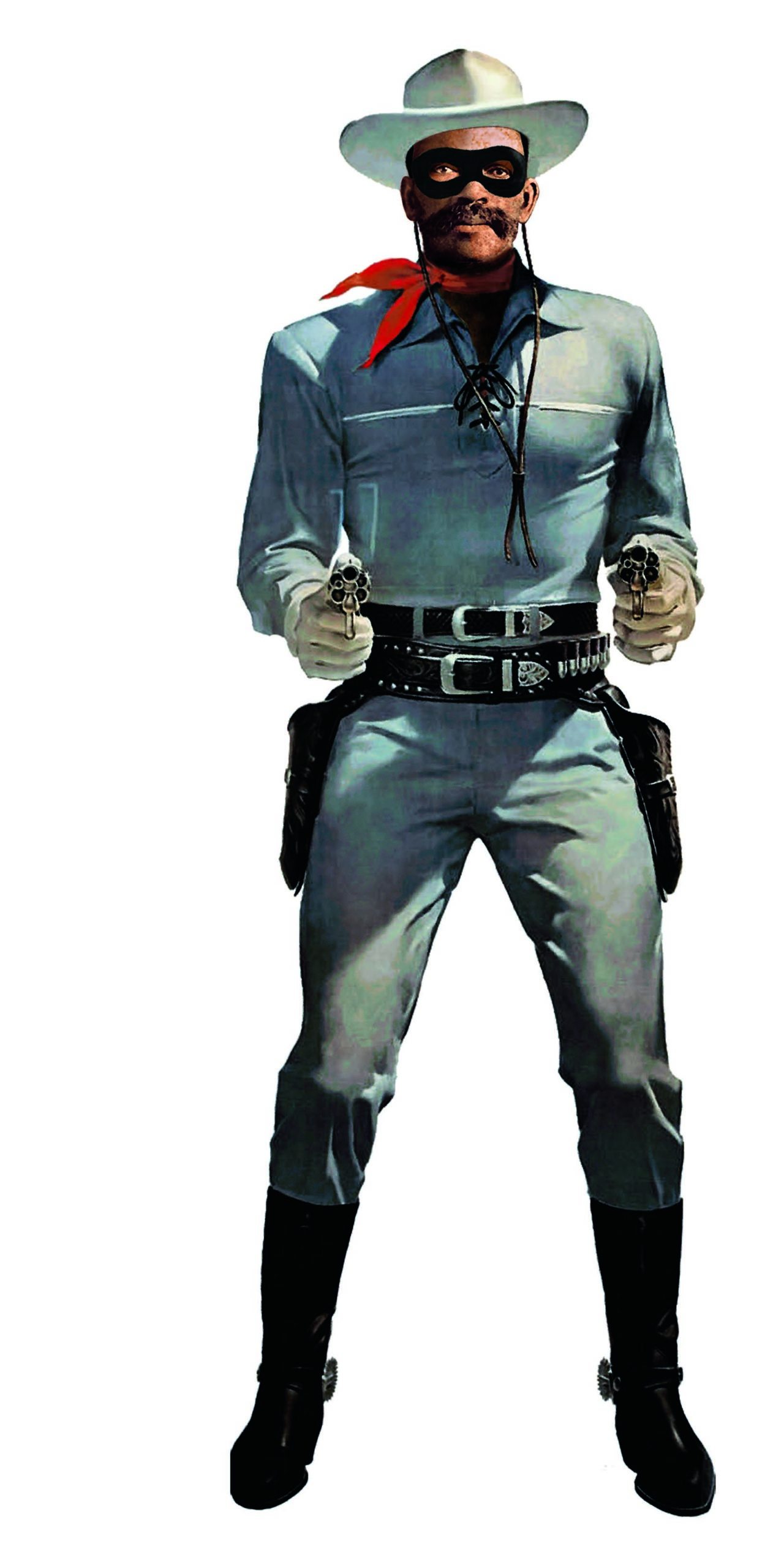
By Art Burton
When The Lone Ranger debuted on the radio in Detroit in 1933, racism was at a zenith in the United States. That the story could have possibly originated with an African American could never be published or talked about publicly. I wrote about the similarities in my biography on Bass Reeves, Black Gun, Silver Star. I stated in the book that we would not be able to prove conclusively that Reeves was the inspiration for the Lone Ranger. We can say unequivocally that Bass Reeves is the closest person to resemble the fictional Lone Ranger on the American Western frontier. Here are the similarities:
• Bass Reeves was a Texan like the Lone Ranger.
• Research shows that the name of the fictional character was Reid, no first name given in the radio or television show. Reid is similar to Reeves.
• Bass Reeves handed out silver dollars; the Lone Ranger gave out silver bullets.
• Bass Reeves rode a gray horse that had the appearance of being white; additionally, he rode sorrel horses during his long tenure as a lawman.
• The deputy U.S. marshals in the Indian Territory were mandated by federal law to take at least one posseman with them when they went into the field to arrest felons. Many of Bass’s possemen were American Indians. At one time, he worked with Grant Johnson, an African/Indian who had strong Indian features. Their work together was said to be legendary.
• Many of the white settlers in the Indian Territory did not know or remember Reeves’ name. They just referred to him as the ‘Black Marshal.’ Like “Who was that masked man?”
• Bass Reeves worked in disguise regularly, just as the fictional Lone Ranger did.
• The Lone Ranger’s sidekick, Tonto, was stated to be a Potawatomi Indian. That tribe was found in the Indian Territory, now the state of Oklahoma.
• George W. Trendle, owner of the Detroit radio station that began the Lone Ranger series, was a lawyer who took credit for coming up with the idea of the fictional character. Many of the felons Bass Reeves arrested were convicted in the Fort Smith, Arkansas, federal court and were transported and housed at the Detroit House of Corrections in Michigan.
• When the Lone Ranger was first shown in comics and movie serials, he had a black mask that covered his whole face. Later for television, the black mask was reduced to just cover a smaller portion of his face.
By Mark Boardman
Let’s get this straight. Art Burton has done important work in the Old West field. His books have given insight to Black and Indian law officers, outlaws and Army scouts—a group who’ve received scant attention in the past.
But his attempt to connect Bass Reeves with the character of the Lone Ranger? Kemosabe, that’s wind on the prairie.
Reeves was a great lawman; nobody can doubt that. But he was little known outside of the Indian and Oklahoma Territories during his lifetime and after. What’s the chance that some Detroit radio guys had ever heard of him? And would they have dared base a white character on a Black man—at a time when racism ran rampant in Michigan? If somebody had discovered that, the station would have been burned to the ground.
We can go point by point on Art’s analysis and find that most of those things applied to countless lawmen of the Old West. Taking various and disparate facts and trying to connect the dots is always dangerous. Take this fake syllogism: All cats die. Plato is dead. Plato is a cat.
The two predicate statements are both true, but the conclusion is crazy. You can take a bunch of facts and reach practically any conclusion you want.
But there are two other things to consider. First, some believe that legendary Texas Ranger Captain John R. Hughes—who was likely the model for Zane Grey’s Lone Star Ranger—sparked the idea for the Lone Ranger. But he didn’t wear a mask, shoot silver bullets, etc., etc.
Then there’s this. In 1933, the creators/producers at WXYZ radio in Detroit were discussing how to form the Ranger. In letters (still available), one suggested that he be like Zorro, with a mask and a flare for derring-do. Another letter suggested that the Ranger be a “Tom Mix type.” Bass Reeves (or John Hughes) is never mentioned. If this is the case, the Lone Ranger was based on popular culture figures, not real-life lawmen.
In all fairness, Art Burton hedges his bet: “I stated in the book that we would not be able to prove conclusively that Reeves was the inspiration for the Lone Ranger.” But many media outlets took the story and ran with it, not looking at the author’s caution. As a result, there are many people who believe the Lone Ranger was Bass Reeves, and vice versa. The history field has enough problems (can I sell you a Billy the Kid photo?) without rumors and speculation clouding things.
So, definitely read Art Burton’s book on Bass Reeves. It’s good; it’s important. But let’s cry out “Hi-yo Silver, away” to the Reeves-Ranger theory.

